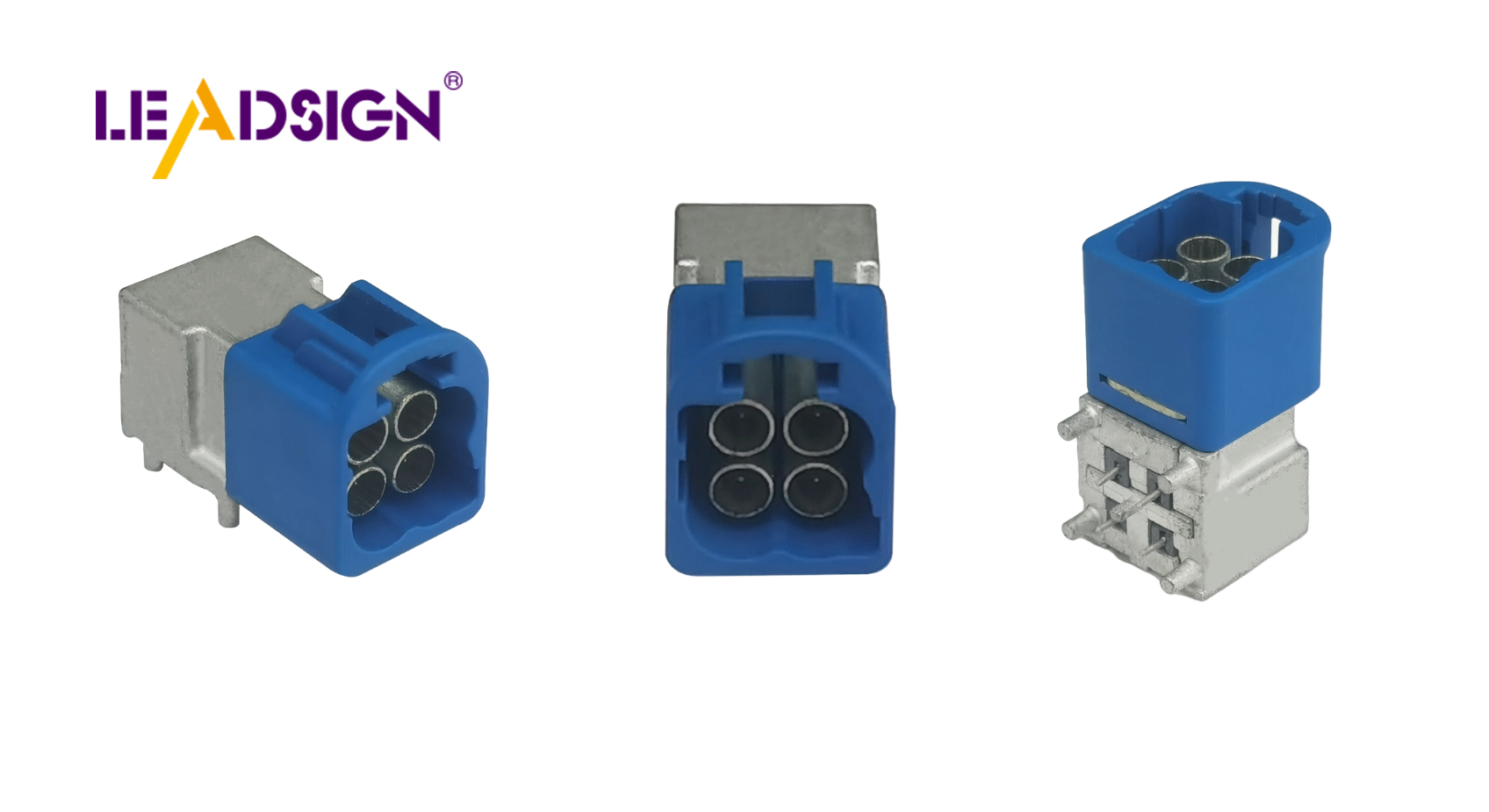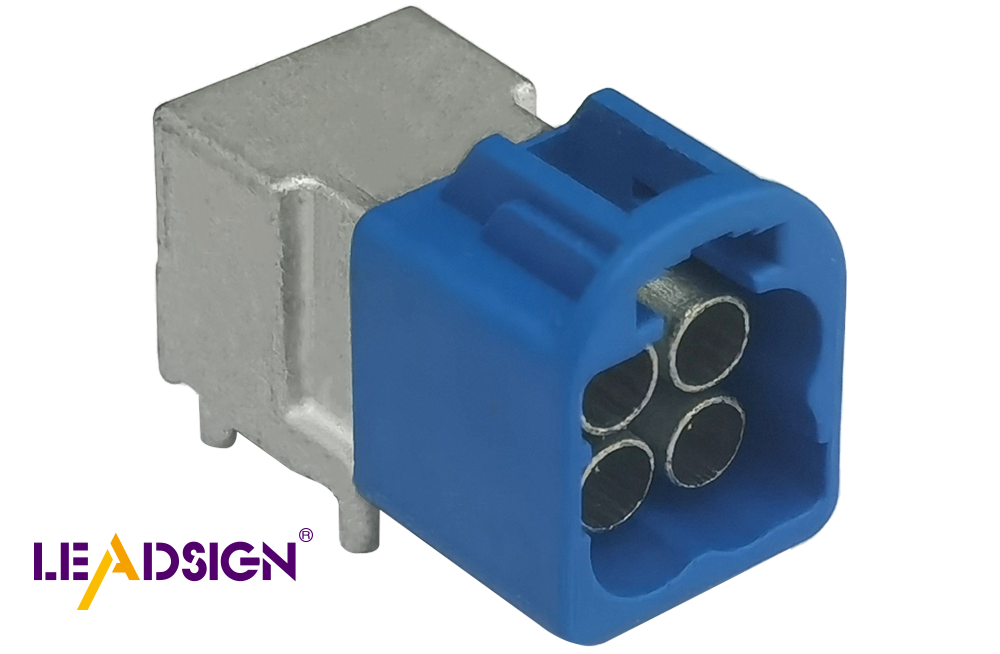Exploring Modern Trends in Automotive Wiring Connector Types

Cars today utilize various automotive electrical connectors types to function effectively. These connectors are crucial for ensuring safety and efficiency. The market for these connectors is projected to grow significantly, from USD 10.95 billion in 2024 to USD 24.08 billion by 2034. Connectors facilitate communication between different car components, supporting features such as music systems and driver assistance tools. As vehicles become more advanced, the demand for improved connectors increases, prompting companies to innovate and develop new solutions.
Impact of Electric Vehicles (EVs) on Connector Types

Electric vehicles have changed the car world a lot. They affect how automotive electrical connectors types are made. These connectors help EVs stay safe and work well.
High-Voltage Connectors
High-voltage connectors are very important for EVs. They move energy from the battery to the car's parts. This keeps power steady and reliable.
Types used in battery systems
Circular Connectors: These are strong and handle lots of power.
Rectangular Connectors: Small size makes them fit in tight spaces.
High-voltage connectors face tough conditions like heat and shaking. Their design helps them meet modern EV needs.
Safety features and standards
Safety is key when making high-voltage connectors. Makers add safety parts to stop accidents:
Insulation: Good materials stop electric shocks.
Locking Mechanisms: Stop plugs from coming loose by accident.
Standards Compliance: Follow global rules for safety and fit with cars.
Scientific Research Findings:
HV connectors keep EVs safe and working well. HV systems help transfer energy safely in EVs.
Charging Connectors
Charging connectors link cars to charging spots, moving energy efficiently.
Types of charging connectors (e.g., CCS, CHAdeMO)
Combined Charging System (CCS): Used in Europe/North America, works with AC/DC charging.
CHAdeMO: Common in Japan, allows fast DC charging.
Each type has special features for different places and cars.
Compatibility and efficiency considerations
Connectors must fit with many chargers and cars for easy use:
Interoperability: Lets plugs work on many networks.
Efficiency: Good plugs save energy during charge, boosting car performance.
Making new connector types grows as more people want electric cars. As tech gets better, these parts will shape transport's future even more.
Connectors in Advanced Driver Assistance Systems (ADAS)
Advanced Driver Assistance Systems, or ADAS, need automotive electrical connectors types to work well. These connectors link parts together, making cars safer and better.
Sensor Connectors
Sensor connectors are key for ADAS in cameras and radar. They help send sensor connectors data correctly.
Types used in cameras and radar systems
Coaxial Connectors: Used in radar for high-frequency signals, needed for good detection.
Micro Connectors: Cameras use these because they are small but handle lots of data.
More high-performance connectors are needed as ADAS grows. Better communication and power sharing drive this demand.
Importance of reliability and data integrity
Reliability is very important for sensor connectors. If they fail, ADAS can stop working right. Makers use top materials to make sure they last and stay connected.
"Research helps grow new connectors for ADAS and self-driving tech."
Communication Connectors
Communication connectors help different car systems share data fast. This is important for ADAS to work right.
CAN bus and Ethernet connectors
CAN Bus Connectors: Strong and reliable, used in cars to connect control units.
Ethernet Connectors: As cars get smarter, these offer big data transfer quickly.
These connectors make ADAS communication better, helping with things like avoiding crashes.
Role in real-time data transmission
Real-time data sending is crucial for ADAS decisions. High bandwidth connectors keep information moving smoothly between car systems.
The future of automotive electrical connectors types is about custom solutions. Companies create special designs to meet safety needs of modern cars.
Connectors in Infotainment Systems
Today's cars use infotainment systems a lot. These systems need different automotive electrical connectors types to work well and stay connected.
Audio and Video Connectors
Audio and video connectors are important for good media in cars. They link audio sources to the car's system, so passengers enjoy music or videos without stops.
Types used for high-quality media transmission
Car Audio Connectors: These have many choices for different audio needs. They connect phones, streaming services, and players to the car.
4 Pin Connector: Small but strong, fits in tight spots. It works well even when conditions are tough.
These connectors help send data fast and steady, keeping audio and video quality high.
Integration with mobile devices
Connecting with mobile devices is key for modern systems. Car Audio Connectors make this easy with converters and adapters. Users can link phones or tablets quickly to access media on the move.
Data Connectors
Data connectors keep infotainment systems connected and user-friendly. They move data between parts, making sure everything runs smoothly.
USB and HDMI connectors
USB Connectors: TE Connectivity has many USB options like standard, mini, micro, and USB Type-C. Some are splash-proof or waterproof for cars.
HDMI Connectors: These support high-def video/audio for a great multimedia experience.
Both USB and HDMI are vital automotive electrical connectors types that ensure good data transfer in cars.
Importance for connectivity and user experience
Data connectors affect how users enjoy infotainment systems. They connect devices easily so users get content without trouble. Fast connectors mean higher data rates and less signal loss, which helps onboard electronics work well.
Future Trends in Automotive Wiring Connectors
Smaller and Lighter Design
Car makers always want cars to be better. Making connectors smaller and lighter helps a lot. Tiny, light connectors make cars weigh less. This helps save fuel and cuts down pollution.
How it Helps Cars
Less Weight: Light connectors make cars weigh less, saving fuel.
Better Space Use: Small connectors fit well, adding more features without making the car bigger.
Keeping Good Performance
Making things small is hard. Small parts need strong materials and smart design to work well. They must handle tough conditions like shaking and heat. Engineers work hard to keep them strong and lasting.
Smart Connectors
Smart connectors are a big step forward for cars. They have sensors that check how things are going. This helps cars run better and stay safe.
Working with IoT and Car Systems
Smart connectors talk with the Internet of Things (IoT) and car systems easily. This lets cars get updates from far away, keeping them in good shape.
Helping Fix Problems Early
Smart connectors can spot problems early by looking at data. This stops big issues before they happen, saving time and money on repairs.
"Smart connectors change car parts by making them better."
The future of car wiring is about new ideas. As tech grows, these parts will keep getting better for new car designs.
Modern car wiring connectors are changing fast. This is because of new electric cars and self-driving tech. These connectors help keep cars safe and working well. They need to have low resistance and good EMI performance. They also must stay reliable. In the future, connectors will be smaller, lighter, and do more jobs. This change will make it easier for car parts to talk and share power. As tech gets better, connectors will do many things at once. This will lead to safer and more dependable ways to travel.
See Also
Why Fakra Connectors Are Essential For Today's Vehicles
Understanding HSD Connectors Within The Auto Sector
Uncovering The Advantages Of Fakra Connectors In Cars
Enhancing Vehicle Data Flow With Modern Connectors And Cables
Transforming Vehicle Connectivity With HFM Connector Benefits

